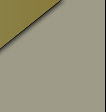Nam June Paik (1932-2006), best known as the father of video art, was also a composer, performer, and sculptor. His early life was tumultuous. His family fled the Korean War in 1950, going first to Hong Kong and then Japan. His education was in music, and his earliest work, in experimental music. In 1958 he met John Cage and in 1963 began to work as part of the amorphous Fluxus movement, working in collaboration to make performances and installations using television and other non-traditional media. It was a time of open-ended definitions, and Paik took advantage of the freedom to expand the definition of art.
Paik´s work is experimental but never obscure. The work shown here honors the inventor of the telephone and turns mere communication into an experience of delight.
In 1982, the Whitney Museum of American Art presented a retrospective of Paik´s work, one of the early instances of audience participation in a mainstream museum, with mats on the floor under Fish Flies on Sky and viewers lying and even sleeping under the work. In 1993, with Hans Haacke, he represented Germany at the Venice Bienale. His death in 2006 was mourned by the entire art world, where he is honored as one of the most inventive artists of the century.
Marilyn A. Zeitlin









